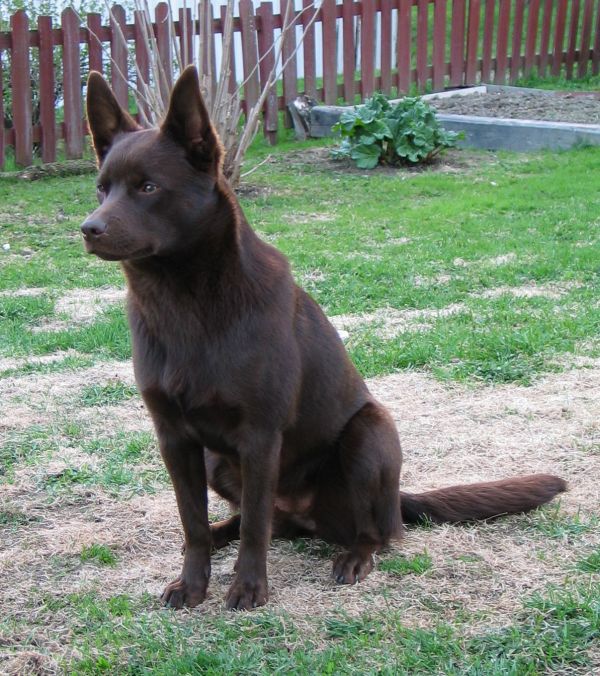The Australian Kelpie is an incredibly attentive, quick-witted dog that was bred to work (particularly herding sheep)! Although a faithful breed, this dog was never meant to be just a couch-potato companion and would be miserable in such a life. Their high activity level (seemingly unending at times) can also make them frustrating for owners who aren’t super active. Although they don’t necessarily need a herd of animals to attend to, they do need plenty of physical and mental exercise in one way or another. It should be mentioned that there are two different “splits” of the breed – the working lines and the show lines. Show lines will be a little calmer (although still very active compared to most breeds) but they won’t have as much drive as the working lines.
Kelpies make great obedience dogs as they love to learn, work, and please their owners! Their high intelligence also means they tend to make it to the “top of their class” when in training groups. Not only do they do well in obedience, but are also fantastic in rally, agility, herding, search and rescue, flyball, tracking, and some have even been used as sled dogs! Others work as service dogs or therapy dogs. In Sweden, there are even Kelpies who perform police work! They are truly very adaptable dogs. Many Kelpies don’t do well with methods relying on forcing the dog to succumb to domination – they work best with people in partnerships rather than being forced.
Australian Kelpies have thick, double coats that can shed frequently. These medium-sized dogs need to be brushed at least once a week and bathed occasionally to help pull out any dead coat. Except for their propensity to shed, they are considered a low-maintenance breed when it comes to grooming. Many are also naturally clean animals. Puppies are often easy to housebreak if they are crate-trained at the same time as they don’t like to potty in confined spaces. Furthermore, the breed tends to be quite healthy with few health issues (although prospective buyers should ask about ataxia in the lines). 
As mentioned above, Kelpies need lots and lots of daily exercise in order to stay happy and healthy! They also need a regular job to do that will keep them busy, or they may try to give themselves a job such as herding kids, cats or even cars (although many will try regardless). When their physical and mental needs are met they can be calm in the house but keep in mind that those needs are higher than many other breeds. It might take a several-mile long jog in order for them to come in the house and chill out for a few hours. As might be imagined, a Kelpie in an apartment would be a horrible idea.
Australian Kelpies, in the right homes, can be great family dogs who get along just as well with children as they do with other pets. Although they don’t need constant companionship from their owners, they also don’t do well when they are left alone all day – mostly because of the lack of activity. Kelpies with nothing to do can develop bad habits such as destructiveness, excessive barking or even fence-fighting with neighboring dogs. This usually isn’t due to separation anxiety (the breed isn’t as prone to it as others), but lack of structure and healthy outlets to use his mind and muscles.
Kelpies love to play and are always on for a game of Frisbee or fetch! Although frequently friendly and happy with their families, they may be a little more wary around strangers. Some can be territorial with their owners or properties when a stranger is near – making them decent watchdogs when at home. This said, it is not healthy if the dog is too timid or fearful of people when he goes out into public. Early and frequent socialization is a must for this breed! A Kelpie who was raised without being socialized can be extremely difficult to live with.
